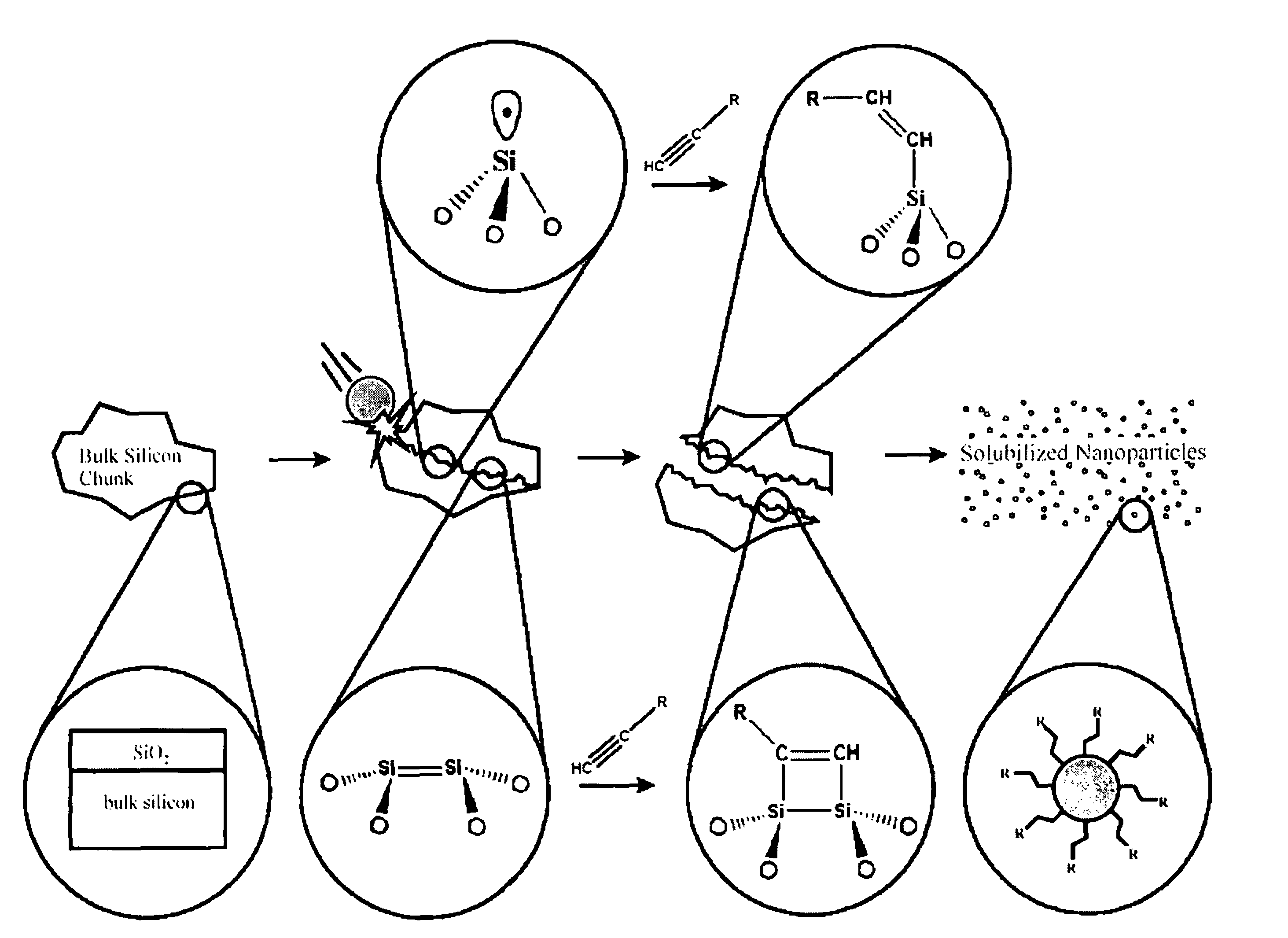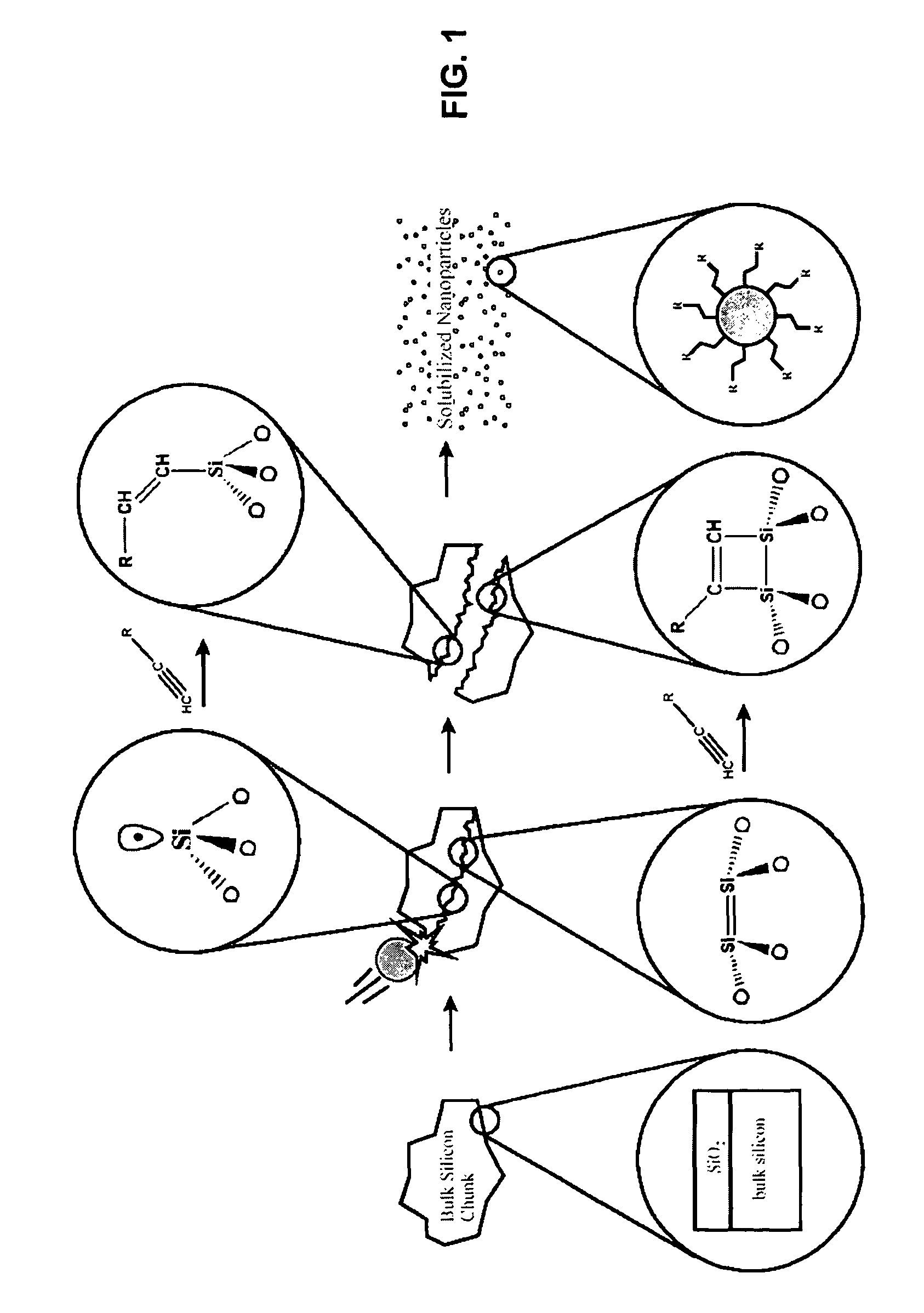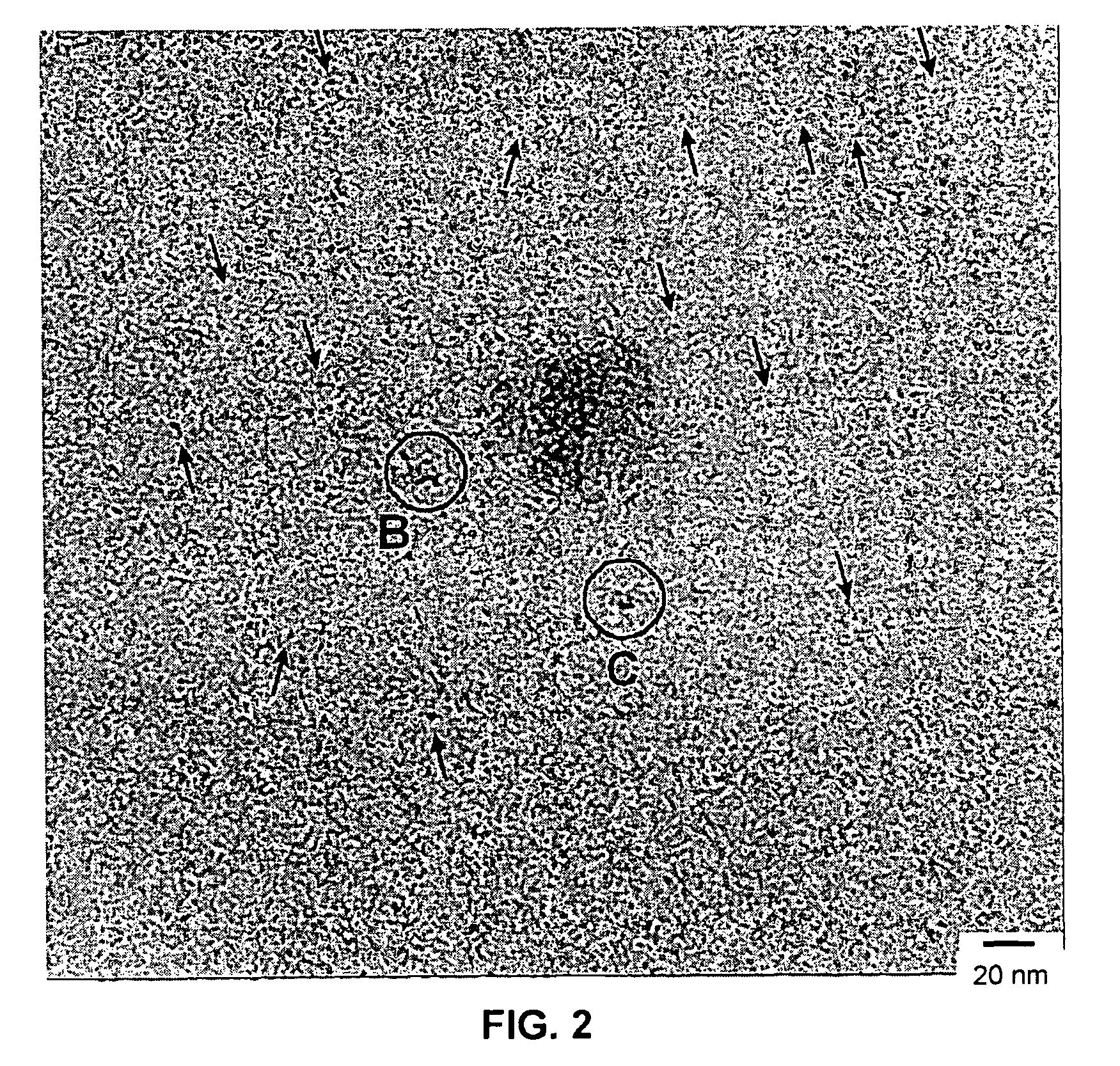Method of forming stable functionalized nanoparticles
a functionalized nanoparticle and functionalization technology, applied in the field of mechanochemical preparation of stable passivated nanoparticles, can solve the problems of low conversion efficiency, inability to provide the correct energy and momentum of the value band, and the presence of oxygen at the silicon surface, and achieve stable functionalized nanoparticles and stable functionalized nanoparticles
- Summary
- Abstract
- Description
- Claims
- Application Information
AI Technical Summary
Benefits of technology
Problems solved by technology
Method used
Image
Examples
Embodiment Construction
[0084]The present invention includes a novel procedure for synthesis of stable alkyl- or alkenyl-passivated silicon nanoparticles using high-energy ball milling. The high energy ball mill can be a SPEX-type mill. The impact energy for SPEX mills ranges within the intervals 0.023-0.084 J and 0.069-0.252 J for the 4 g and 12 g balls, respectively. High energy ball mills like the SPEX models have ball velocities of around 4 m / s, which translates to kinetic energy inputs of 0.012 J / hit or power inputs of 0.24 W / g-ball. SPEX type mills and stainless steel vials are commercially available (http: / / www.spexsp.com). The vials can be nylon vials made from Nylon 6 / 6 and of the same dimensions as the commercially available stainless steel vials. The main advantage of this mechanochemical approach is the simultaneous production of silicon nanoparticles and the chemical passivation of the particle surface by alkyl or alkenyl groups covalently linked through strong Si—C bonds.
[0085]This invention ...
PUM
| Property | Measurement | Unit |
|---|---|---|
| size | aaaaa | aaaaa |
| sizes | aaaaa | aaaaa |
| sizes | aaaaa | aaaaa |
Abstract
Description
Claims
Application Information
 Login to View More
Login to View More - R&D
- Intellectual Property
- Life Sciences
- Materials
- Tech Scout
- Unparalleled Data Quality
- Higher Quality Content
- 60% Fewer Hallucinations
Browse by: Latest US Patents, China's latest patents, Technical Efficacy Thesaurus, Application Domain, Technology Topic, Popular Technical Reports.
© 2025 PatSnap. All rights reserved.Legal|Privacy policy|Modern Slavery Act Transparency Statement|Sitemap|About US| Contact US: help@patsnap.com



